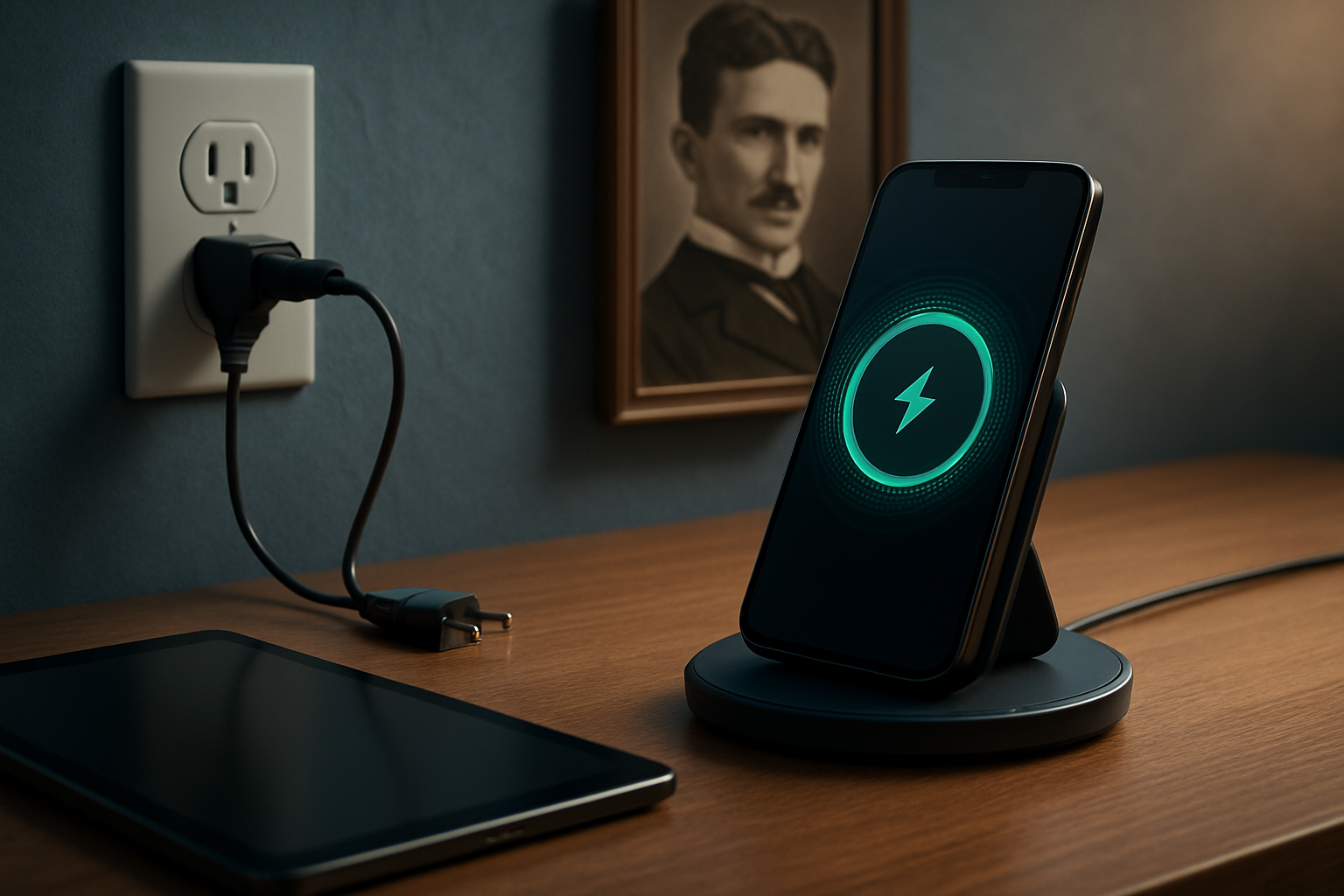Cutting the Cord: The Surge of Wireless Charging Tech
Our smartphones, tablets, and other electronic devices have become ubiquitous parts of our daily lives. But with constant use comes the constant need to recharge, a process that has traditionally been tethered to a cord and a plug. However, the tech world is currently buzzing with the development of wireless charging technology, promising to cut the cord and free us from the power outlet.

Unraveling the History of Wireless Charging
Wireless charging may seem like a recent innovation, but its roots can be traced back to the late 19th century. In 1891, Nikola Tesla demonstrated the possibility of transmitting electricity without wires. He used a Tesla coil to light up phosphorescent and incandescent lamps from a distance, proving the concept of electromagnetic fields and resonant inductive coupling—foundational principles of modern wireless charging. However, commercial applications of wireless charging only started to appear in the 21st century, with the development of the Qi (pronounced “chee”) standard by the Wireless Power Consortium in 2008.
The Current State of Wireless Charging
Fast forward to today, wireless charging has become increasingly prevalent. Many flagship smartphones now come equipped with built-in wireless charging capabilities, and a plethora of third-party charging pads and stands are available on the market. The technology is not limited to smartphones alone; it is also infiltrating the automotive industry, with several companies developing wireless charging systems for electric vehicles.
The Future of Wireless Power Transfer
The future of wireless charging holds even more promise. Tech companies are working on developing “true” wireless charging—that is, charging devices over a distance without the need for a charging pad. Companies like Energous and Ossia are pioneering this tech, using radio frequency and other technologies to deliver power over the air.
Pricing and Market Impact
The price range of wireless chargers currently varies significantly, from affordable $10 pads to high-end $100 charging stands. As the technology continues to evolve, we can expect a wider range of wireless charging options at different price points. As for its market impact, the global wireless charging market was valued at $6.51 billion in 2018 and is projected to reach $40.24 billion by 2027, according to a report by Allied Market Research.
A World Without Wires
Wireless charging is on its way to becoming the norm, and its impact extends beyond mere convenience. It has the potential to revolutionize the way we power our devices, reduce e-waste from discarded chargers, and even pave the way for new types of devices that would be impractical with traditional wired charging. The future of charging, it seems, is indeed wireless.
In conclusion, the surge in wireless charging technology is a testament to our never-ending quest for convenience and efficiency. As we continue to untangle ourselves from the constraints of wired charging, we can look forward to a future where our devices are always powered up, no strings attached.






